Follow us and stay on top of everything CRO
Read summarized version with
A massive 7258% surge in the number of marketing tech companies in just 12 years.
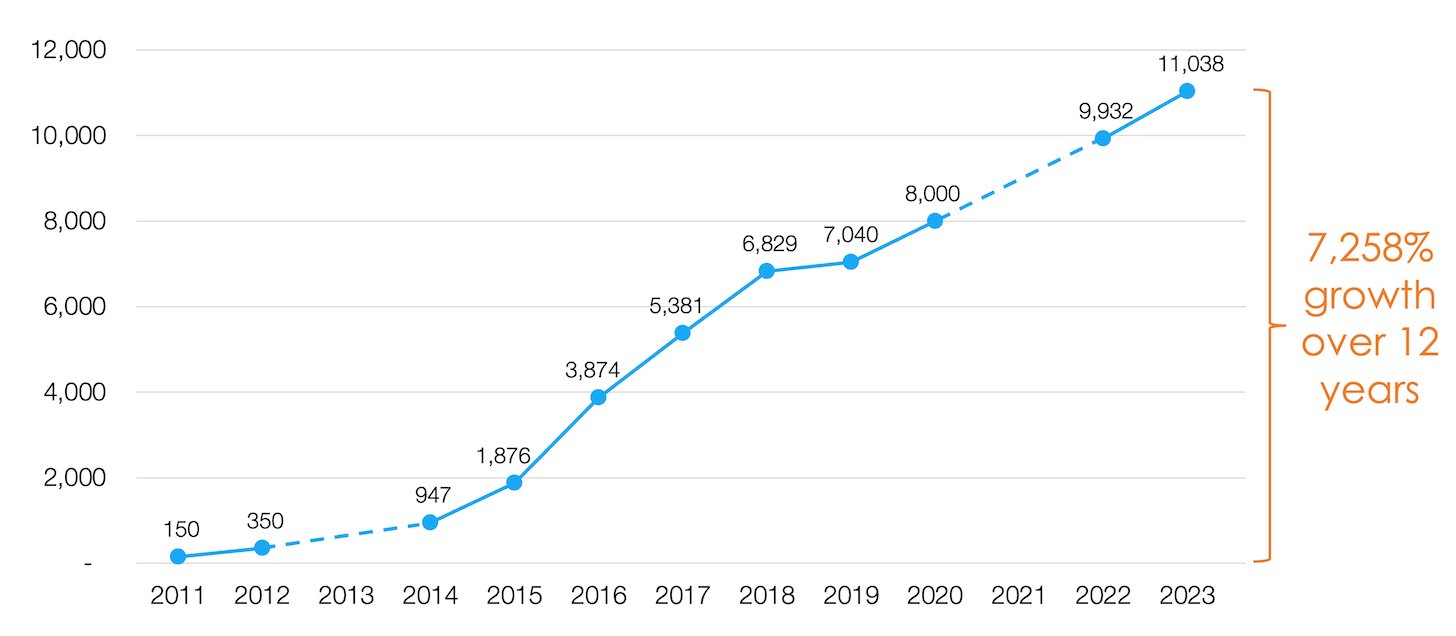
Yes, that’s an astounding fact.
But here’s the scoop – it’s not just a marketing tech fiesta; every corner of the B2B world is buzzing with competition, especially in the post-COVID digital boom.
What does this mean?
If you’re steering a digital ship in the B2B sea, you’ve got to be tip-top in what you offer and how you offer it. Any hiccup in meeting your website visitors or potential customers’ expectations along the sales cycles is an open invitation for your rivals to swoop in.
That’s why, more than ever, it’s high time to bet big on conversion rate optimization tools (CRO) to plug leaks in your conversion funnel and ensure your competitors don’t sneak in and snatch your share.
In this blog post, you’ll delve into essential concepts, effective strategies, and the utilization of VWO as a powerful tool for B2B conversion rate Optimization (CRO).
So, buckle up, and let’s dive in.
What is B2B conversion rate optimization?
Conversion rate optimization in B2B entails fine-tuning the website or any digital touchpoint experience. This optimization is rooted in behavioral or analytical data, aiming for a substantial uplift in the website’s overall performance. The desired improvements extend to key metrics, be it ROI, lead generation, or achieving any other specific business objective.
Given the elongated purchase cycles in B2B scenarios, CRO takes on added significance. Maintaining a consistent and relevant digital experience is paramount. On top of this, even a minor dip in conversion rates can reverberate significantly in terms of monetary value. So, optimizing for success is not just a preference; it’s a strategic imperative!
Let’s delve into how conversion rate optimization campaigns are practically executed, using the example of VWO, a B2B SaaS product that is into CRO and experimentation.
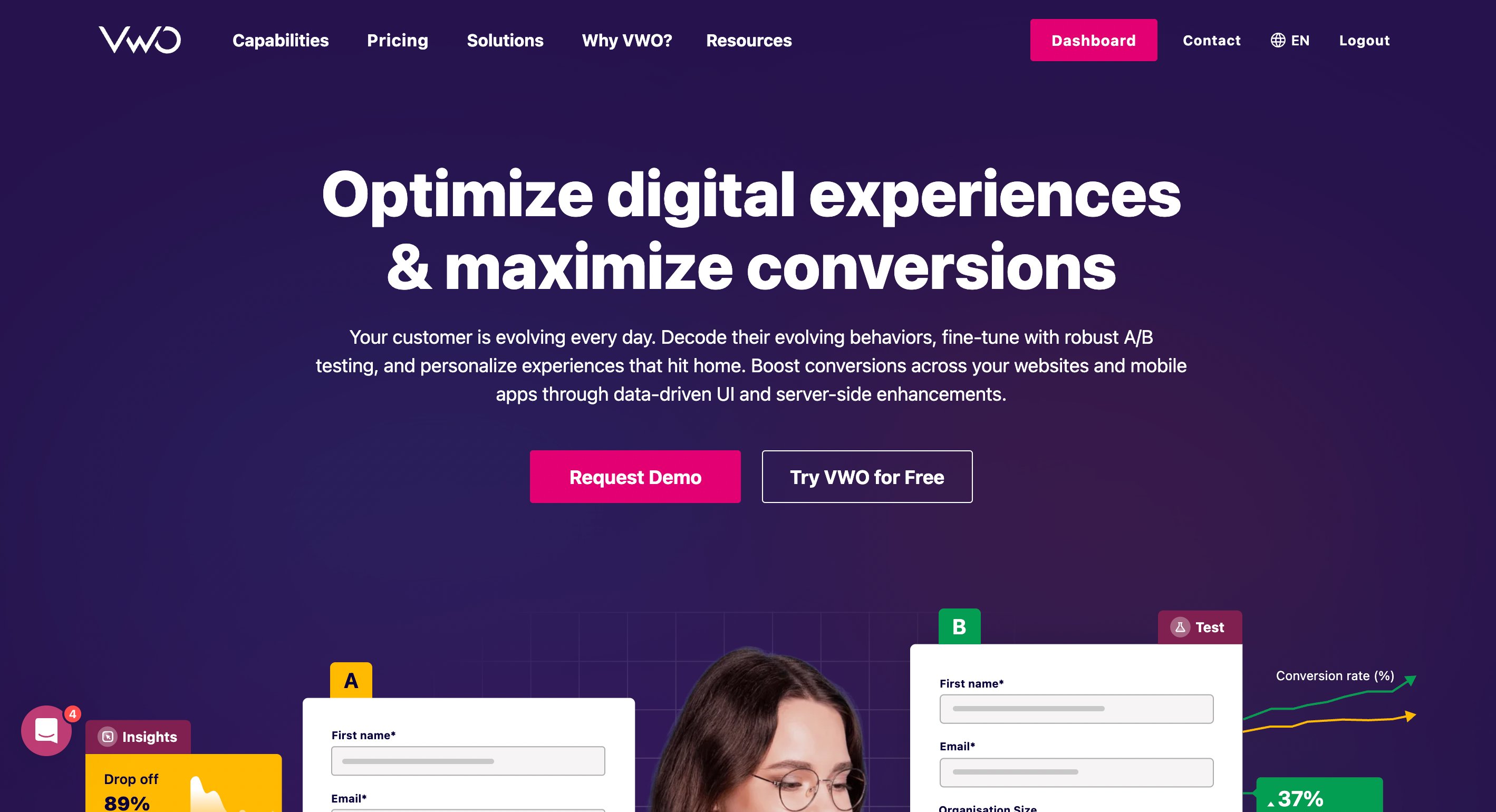
After creating a hypothesis for increasing conversion based on behavior and web analytics data of the home page, you can run several CRO campaigns like,
- Content optimization campaign: Crafting new H1 heading (Optimize digital experiences & maximize conversions) and text to enhance keyword ranking, focusing on primary terms such as A/B testing, personalization, etc.
- A/B test campaigns: Experimenting with new colors or text for “Request Demo” and “Try VWO for Free” calls-to-action (CTAs). Testing variations in the navigation menu or lead generation forms that pop up after clicking both CTAs.
- Personalization campaigns: Tailoring content based on client backgrounds, personalizing H1 heading based on the client’s industry like Edtech, eCommerce, etc.
- Server-side experimentation campaign: Conducting complex experiments, especially after visitors transition to paying customers, like testing the B2B product features.
- Website experience enhancement campaign: Enhancing the SaaS website experience by adding interactive widgets, chatbots, pop-up forms, etc.
These CRO campaign types are just to give you an idea and are not exhaustive. All these campaigns aim to make the visitor’s experience delightful and increase the likelihood of conversions. Now let’s explore some strategies to inspire your B2B conversion rate optimization efforts.
Five B2B conversion rate optimization strategies
Exploring the B2B landscape involves a distinct set of challenges, especially given the significant financial stakes in play. In B2B scenarios, a lead’s decision to sign up or engage with a salesperson is a result of careful research and a detailed analysis of the capabilities and success track record of the B2B product. Additionally, they seek a seamless experience that allows them to efficiently move to the next steps, such as scheduling a call or accessing valuable resources like whitepapers. In light of this distinctive context, here are some effective B2B CRO strategies.
a. Use a customer data platform (CDP) for comprehensive data insights
A CDP consolidates data from multiple sources, processes it, combines it, and cleans it, providing a comprehensive view of individual customer profiles or datasets for behavior trends.
The significance of a CDP lies in laying the foundation for all your CRO programs. By deriving insights from data-backed hypotheses, you gain the ability to monitor the entire customer journey and identify weaknesses within it. This is instrumental in crafting effective CRO practices.
While a CDP itself might not directly pique the interest of potential clients or address their queries, it serves as a powerful tool for understanding the reasons behind challenges in engaging or converting them. It acts as a diagnostic tool, allowing you to uncover insights to inform targeted strategies to enhance customer experience and drive conversions.
For example, your CDP report highlights an underperforming segment from Japan, identified through data from web analytics tools like GA4. To delve deeper into the issues faced by this segment, you integrate your CDP with a behavior analytics tool. On the behavior analytics tool, you can watch heatmap session recordings for the corresponding segment to gain deeper insights.
For instance, if the heatmap reveals a significant drop-off in the testimonial section, it indicates a potential trust issue. In response, you can tailor your content strategy by adding testimonials from Japan or incorporating ratings from trusted sources in the region. Alternatively, if the drop-off occurs in the first-fold, you may need a dedicated landing page for the Japan geography.
So, you see, the CDP serves as a central hub for streamlined data management. It allows you to speed up the process of pinpointing user problems, understanding their behavior intricacies, and derive actionable insights. Armed with this information, you’re well-equipped to create targeted and engaging CRO campaigns that directly address the pain points identified through the data analysis process.
b. Showcase the product’s credibility through the copy and website elements.
Potential clients often delve into the history and past performance of a company during the early stages of product research. Therefore, your landing pages should strategically convey the credibility of your product through compelling copy.
Take, for instance, the landing page of Semrush.
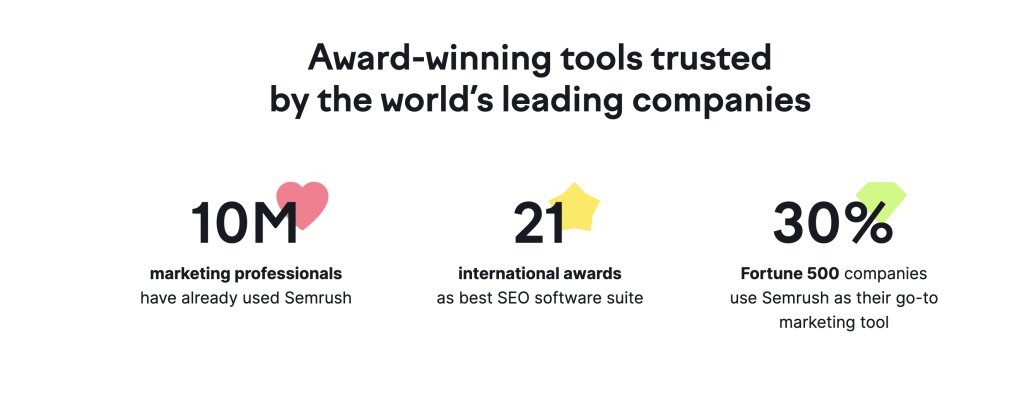
Semrush strategically showcases that its product is trusted by a multitude of companies, including a significant number of Fortune 500 companies. What’s noteworthy is that the credibility isn’t merely asserted through text; it’s backed up with compelling statistics.
As a B2B company, crafting copy for your website landing page that effectively highlights your credibility is a crucial step. Consider A/B testing different variations of your copy to gauge the impact it makes on your audience. For example, Basecamp, a project management software, conducted A/B tests with a variation of their landing page featuring a copy showcasing their client base in the first fold. The result? An average uplift of 7.82% based on four tests.
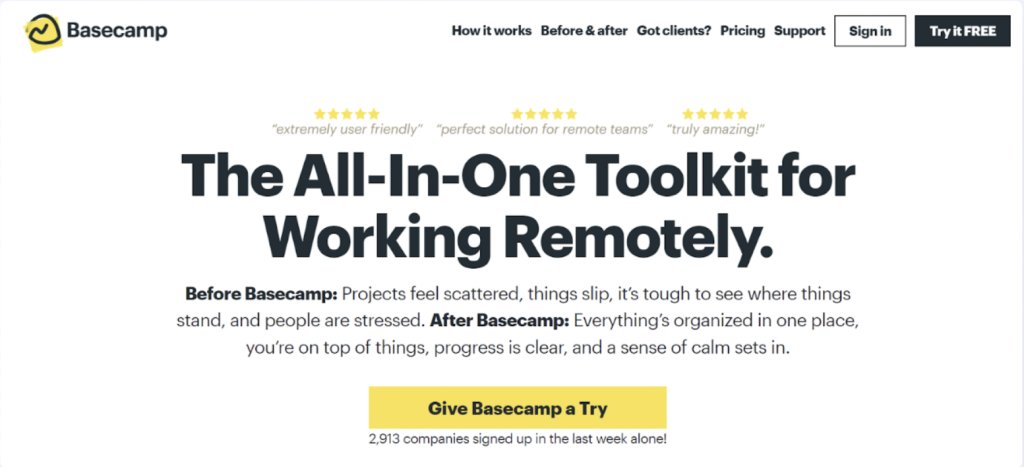
c. Utilize generative AI tools to scale up CRO
Generative AI is rapidly transforming various business functions, and CRO is no exception. This innovative technology is revolutionizing key aspects of CRO, such as data collection, customer feedback/delight, experimentation, and personalization, leading to faster and more effective results in meeting customer expectations and enhancing their experience.
Take, for instance, Intercom’s use of generative AI in the form of a chatbot named Fin. Visitors can interact with Fin to seek answers to their queries. While promoting Fin is one goal, it also serves the purpose of providing potential leads with quicker resolutions to their inquiries.
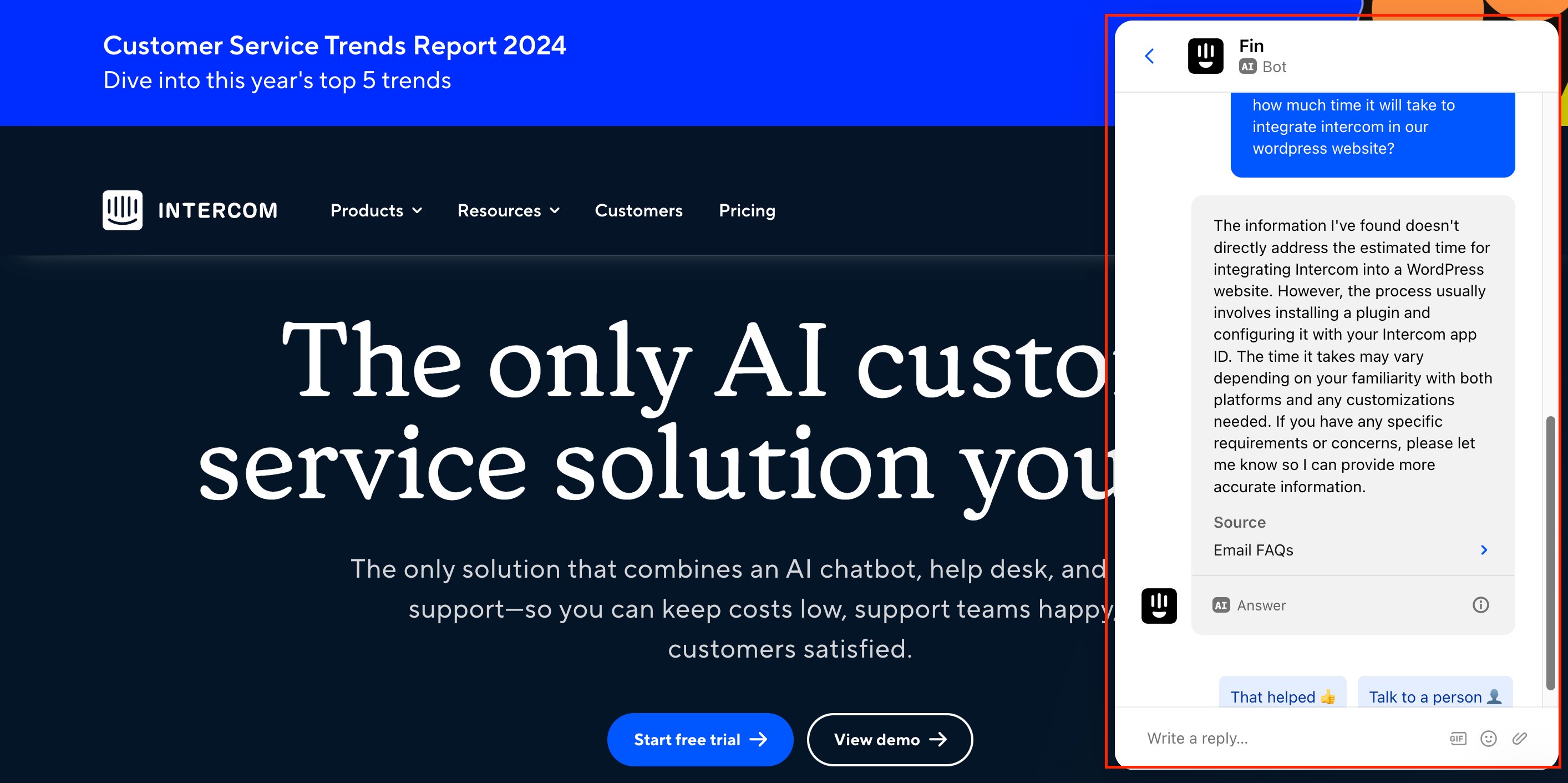
With this approach, potential leads experience shorter waiting times—seconds rather than minutes. This automation contributes to optimizing human resources by reducing the workload on the marketing and sales teams. Furthermore, potential clients benefit from quicker doubt resolution, streamlining their research process and increasing the likelihood of moving forward with free trials, demos, or sales calls.
Another example of a generative AI-based tool for CRO is VWO Testing-Web. It allows you to generate optimization ideas based on website pages, reducing the time spent on the idea generation stage and easing the strain on the CRO team. This tool provides actionable hypotheses for pages, streamlining the CRO team’s work and increasing the A/B test rate while ensuring test quality.
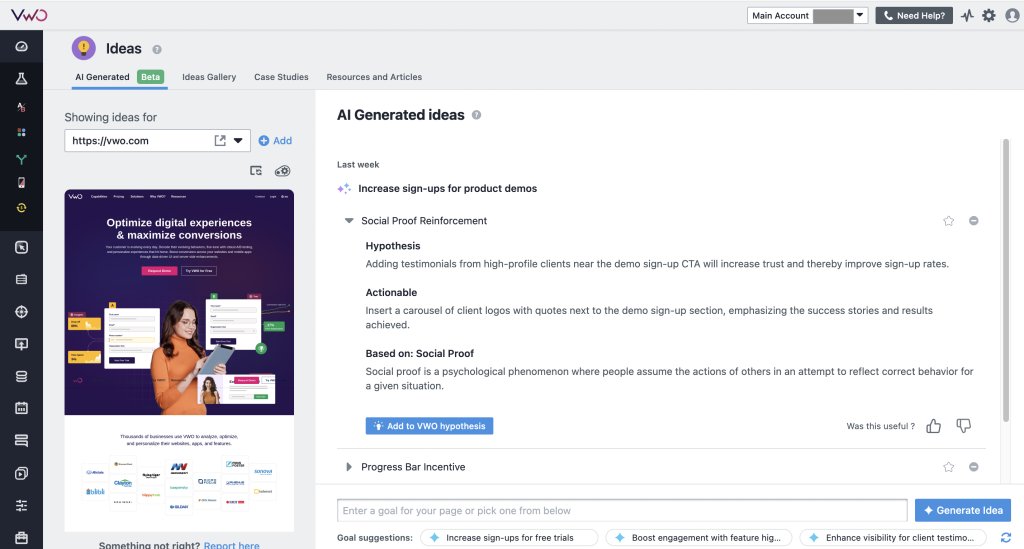
If you are interested, you can learn more about this AI-based product update.
Embracing generative AI in your CRO strategy brings forth a wave of efficiency, innovation, and quicker responses, ensuring a seamless journey for your potential leads. Whether it’s Intercom’s Fin providing instant answers or VWO Testing-Web streamlining hypothesis generation, these AI-powered tools open doors to faster optimization and enhanced user experiences. As you venture into the realm of CRO, consider integrating these cutting-edge solutions to stay at the forefront of technological advancements and elevate your conversion optimization initiatives.
d. Build an experimentation loop for lead generation
For any B2B organization, inbound marketing lead generation from the website is a pivotal aspect. Instead of conducting random A/B tests, relying on an experimentation loop proves more effective.
But what exactly does the experimentation loop entail? It’s a systematic process where you conduct an initial A/B test and then proceed to run a subsequent experimentation campaign based on hypotheses derived from the results of the preceding test. Let’s understand it through an example.
Imagine you have a standard first-fold landing page featuring an H1 heading, followed by subtext, and a clear call-to-action (CTA) prompting visitors to either book a demo or avail of a free trial. It might look something like this:
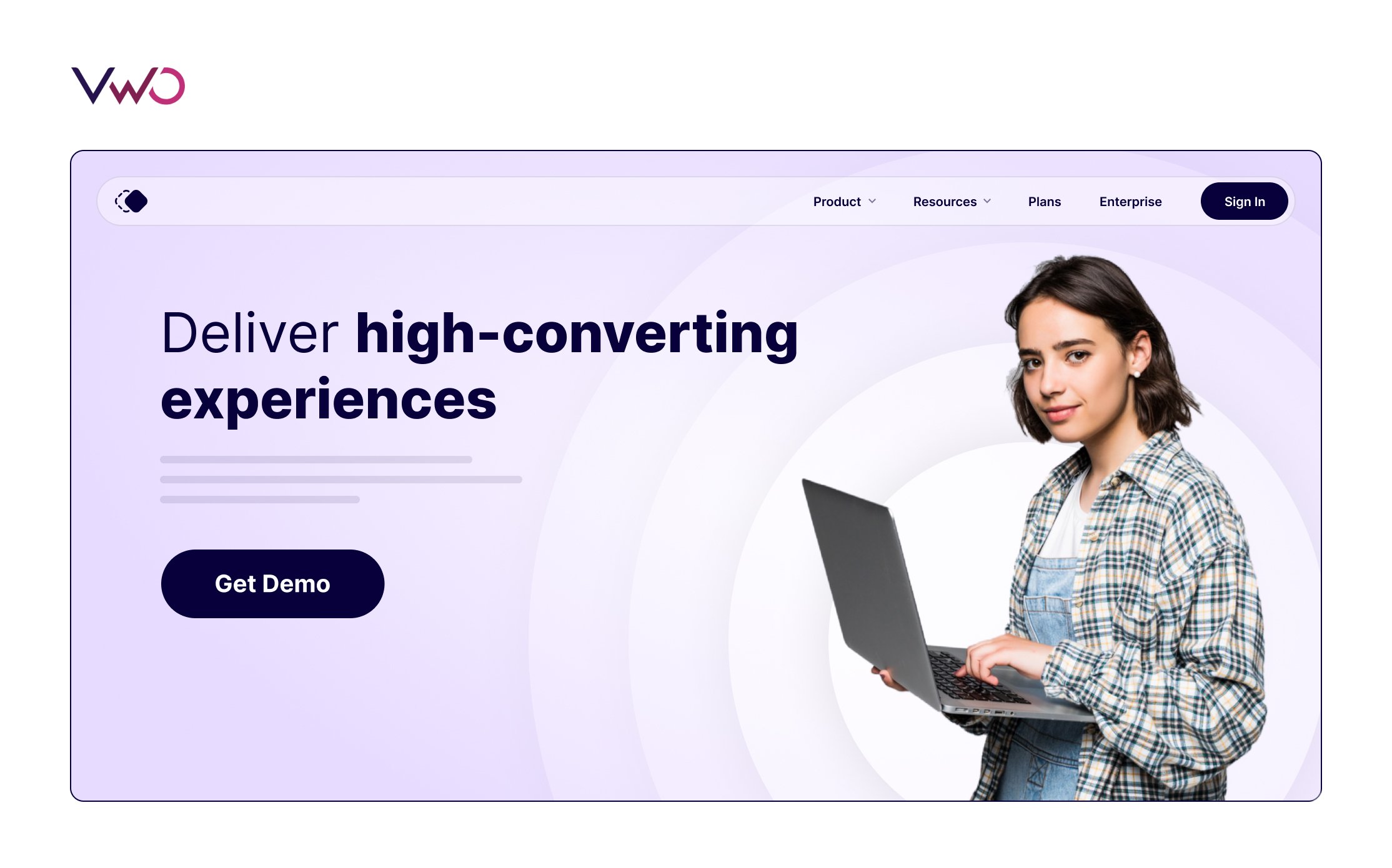
Now, let’s say you conduct a standard A/B test, perhaps altering the H1 heading or subtext. Upon concluding the test, you observe an improvement in the conversion rate of the CTA. Instead of concluding the experimentation process, the experimentation loop approach involves delving deeper into the A/B test reports using various filters and segments.
For example, your analysis may unveil that a particular geographical segment is lagging in performance compared to others. In response, you can kick off a personalization campaign specifically tailored to this geography. Alternatively, you might initiate another A/B test, adjusting headings to incorporate keywords relevant to the target audience in that specific region or include product information that resonates with this particular segment. This strategic iteration is likely to deliver an additional boost to your conversion rate.
By adopting the experimentation loop approach, you not only capitalize on the positive outcomes of your initial A/B test but also harness the insights gained to refine and optimize further. This iterative process ensures a more nuanced understanding of user behavior, allowing you to implement targeted strategies that address specific challenges or opportunities uncovered during the initial testing phase.
e. Make your lead generation form less overwhelming with a multi-step format
At the heart of any digital interaction lies the lead form—a pivotal element that marks the initiation of a potential business relationship. To foster a seamless journey for customers venturing into this realm, the lead generation process must be user-friendly and facilitate progression to the next steps, such as booking a demo call or accessing a free hands-on demo.
While the ideal scenario involves a concise form with fewer fields, many B2B companies face the challenge of seeking extensive information to deliver a highly personalized experience in subsequent stages. However, presenting a single form with numerous fields may overwhelm visitors, resulting in drop-offs.
To address this dilemma, a strategic approach involves implementing a multistep lead generation form. This innovative solution breaks down a multi-field form into manageable segments, mitigating the perceived intimidation and creating a positive user experience. By allowing customers and leads to input their information in smaller, more digestible chunks, this approach enhances user satisfaction and, ultimately, boosts conversion rates.
A compelling illustration of the effectiveness of a multistep lead generation form is evident in the case of VentureHarbour, a bootstrapped venture studio. The firm strategically implemented a multi-step signup form on its website, orchestrating the sequence to commence with steps that demanded minimal effort to complete.
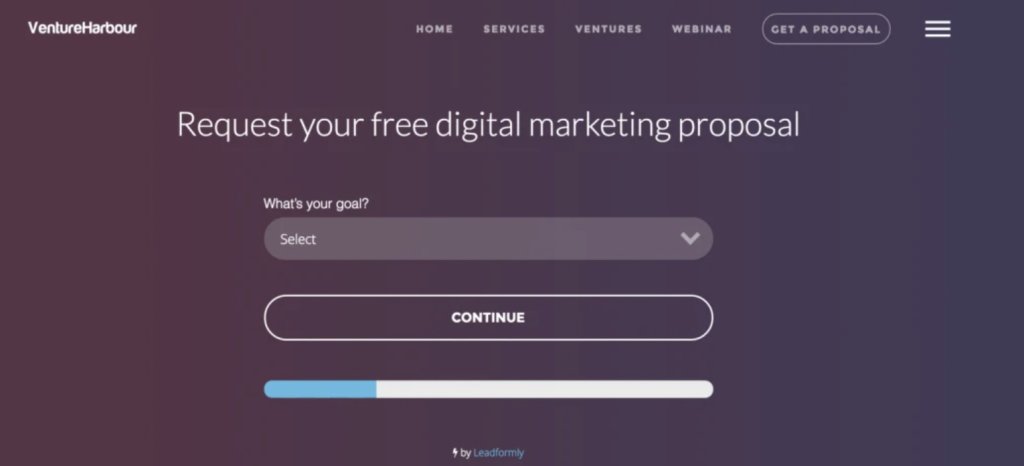
The impact was remarkable. The transition from a single-step to a multi-step form made their conversion rate vary from a modest 0.96% to an impressive 8.1%, underscoring the potency of this approach in significantly enhancing user engagement and average conversion rate.
Moreover, incorporating periodic analysis of the form using form analytics tools allows you to closely monitor its performance. By leveraging insights gained through analysis, you can formulate hypotheses to further improve the form and initiate targeted CRO campaigns for continuous optimization.
When it comes to achieving success in B2B CRO, crafting a solid plan is imperative. The strategies discussed above can greatly enrich and guide you toward your goals. However, having the right tool is crucial for effective implementation. If you’re still in search of the ideal tool or considering alternatives, here’s essential information about VWO that you shouldn’t overlook.
Using VWO for effective B2B conversion rate optimization
From behavior analysis to personalization, VWO stands out as a comprehensive CRO platform, offering a diverse set of features to elevate your CRO endeavors. Leveraging VWO Insights, you can employ scrollmaps, heatmaps, form analysis, and surveys to gain insights into visitor behavior and understand the reasons behind drop-offs. The seamless integration allows you to transition from behavior analysis to creating hypotheses directly within the same dashboard. Subsequently, you can execute A/B tests using VWO Testing or run a FullStack A/B test.
Also, VWO enables you to launch personalization campaigns through VWO Personalize. What sets VWO apart is its incorporation of VWO Data 360 (CDP), facilitating easy data management.
Adding to its impressive array of capabilities, VWO embraces generative AI to generate optimization ideas, create survey reports, suggest text, and promise much more in its evolving pipeline of features.
Curious about the success track record for B2B organizations? Let’s delve into a compelling case study involving VWO Experimentation Suites.
Hubstaff, a B2B company specializing in time tracking and project management software received hundreds of thousands of visitors on the homepage. Thus, even a slight dip in the conversion rate could translate to significant revenue loss. To address this concern and elevate its conversion rate, Hubstaff turned to VWO.
The Hubstaff team kicked off the improvement process by conducting a comprehensive behavior analysis of the homepage using VWO Insights. The insights derived from this analysis prompted them to embark on a complete redesign of the homepage.
Here’s a glimpse of the original homepage:
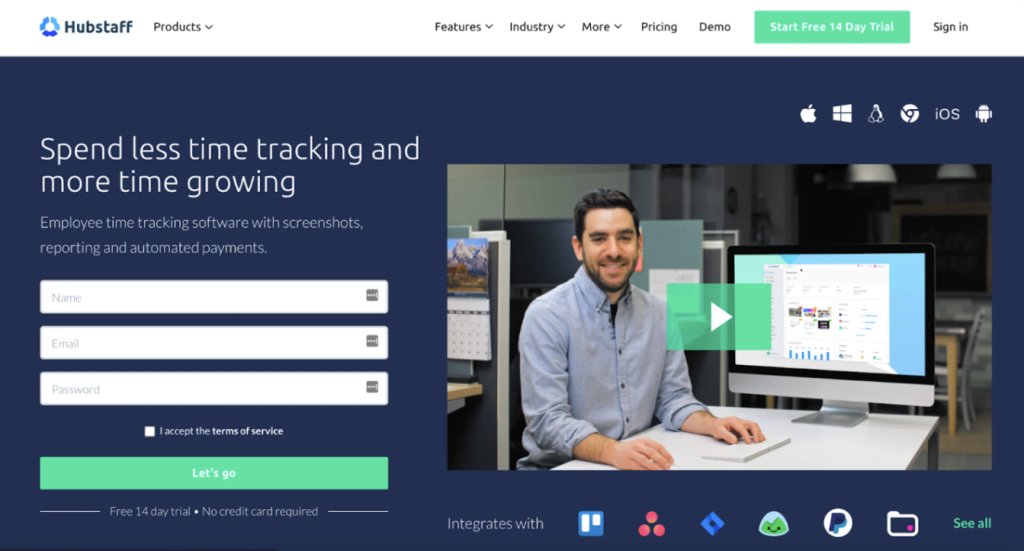
And here’s the variation with the new design:
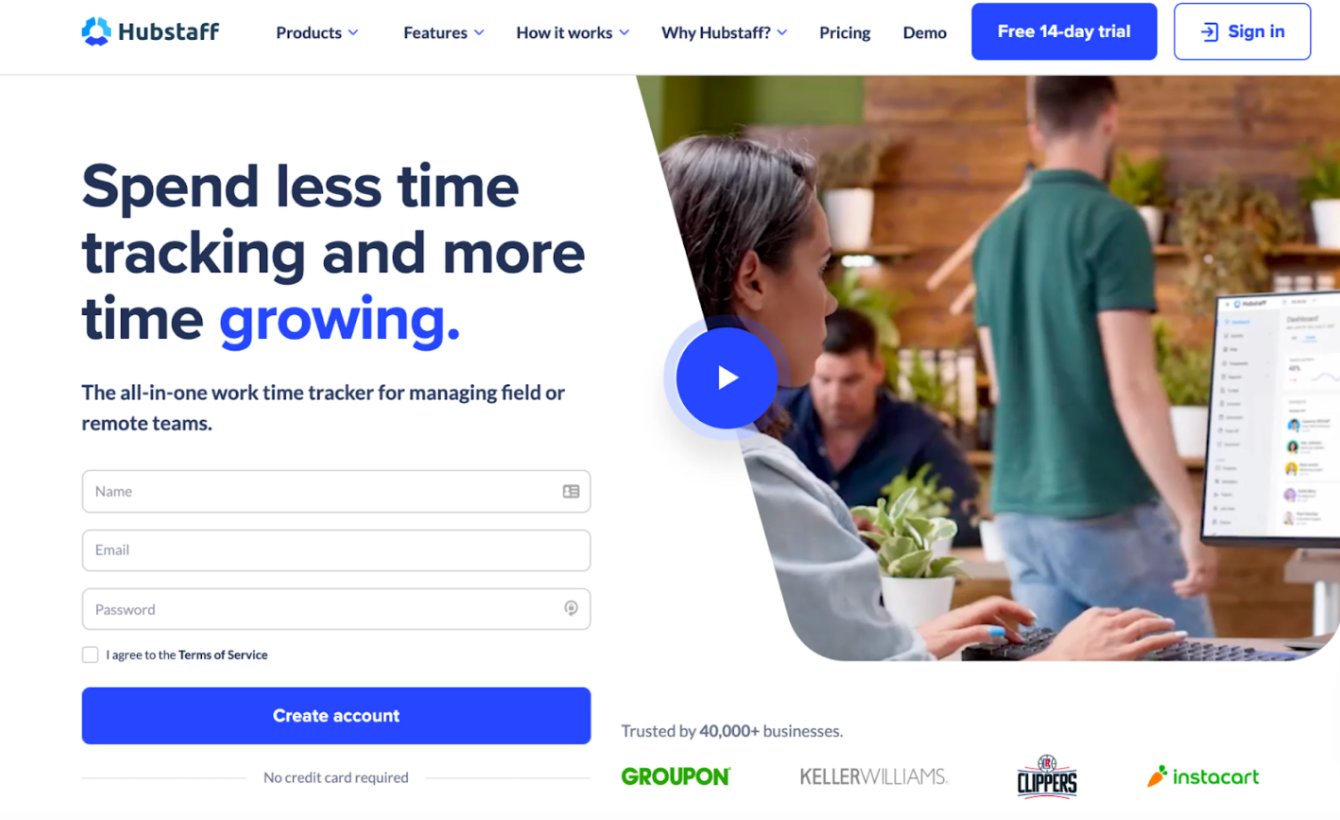
The test ran for three months, encompassing a total of 259k visitors across the two pages involved. The result? The variation recorded a remarkable 49% increase in sign-ups, showcasing the effectiveness of VWO experimentation suites.
If these results have piqued your interest and you’re eager to explore more of VWO’s capabilities, here’s a 30-day free trial for you. It grants access to all the features and capabilities that VWO has to offer. So, do give it a try.
In conclusion
B2B CRO is a must for any business looking to thrive in the post-COVID digital landscape. Fine-tuning the website or any digital touchpoint experience based on behavioral or analytical data can lead to a significant uplift in the website’s overall performance.
By implementing effective CRO strategies like using a CDP, personalization, A/B testing, content optimization, and website experience enhancement, businesses can provide relevant and necessary information to the B2B lead along with a hassle-free experience to move forward in the sales funnel. With the help of powerful tools like VWO, businesses can drive measurable results, keep up with conversion rate benchmarks, and stay ahead of the competition.
Frequently asked questions (FAQs)
Determining what constitutes a “good” conversion rate or even an acceptable average conversion rate for B2B sales hinges on various factors, including industry specifics, product complexity, target market dynamics, and the effectiveness of marketing channels.
Optimizing B2B sales involves several strategies, including investing in a robust CRM tool, implementing lead nurturing and scoring techniques, and personalizing lead sales experiences using available data.
Effective B2B marketing strategies encompass personalized headings on landing pages, integrating AI-based chat assistants for prompt query resolution, highlighting client testimonials and reputable brands, and projecting third-party trust scores through website copies and social media posts.
Attracting B2B customers involves implementing diverse strategies, including providing free demos, incentivizing 1-1 meetings with gift cards, and promoting case studies through social media.













